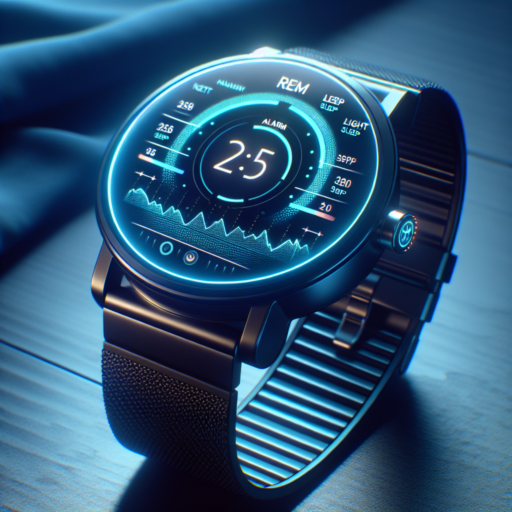How much charge does an Apple Watch need for sleep tracking?
Understanding the battery requirements for utilizing the sleep tracking feature on an Apple Watch is crucial for users who aim to monitor their sleep patterns without the inconvenience of a dead battery. To optimally use the sleep tracking capabilities of an Apple Watch, a certain level of battery charge is essential. This ensures that your device can last through the night and possibly well into the next day without requiring an immediate charge upon waking.
For effective sleep tracking, it is recommended that your Apple Watch has at least a 30% battery charge before you go to bed. This threshold ensures that the watch has sufficient power to monitor your sleep throughout the night. The sleep tracking feature is designed to be power-efficient, not consuming a significant amount of battery. However, having at least 30% charge before bedtime provides a buffer to account for any background activities your watch might perform while you are asleep.
Managing Battery Life for Sleep Tracking
- Charge your Apple Watch to around 80% before sleep tracking to ensure it lasts through the night and the following day.
- Consider enabling the battery-saving mode during the day if you plan to use sleep tracking without charging your watch overnight.
- Adjusting settings such as turning off unnecessary notifications or features can also help in extending your battery life for sleep tracking purposes.
No se han encontrado productos.
Does Apple Watch sleep tracking drain battery?
Many Apple Watch users wonder about the impact of sleep tracking on their device’s battery life. It’s a valid concern, especially for those who rely on their watch throughout the day and may not have frequent opportunities to charge it. When utilizing the sleep tracking feature, the Apple Watch employs several sensors to monitor your sleep patterns, which, in theory, could lead to increased battery consumption.
The sleep tracking functionality on the Apple Watch is designed to be power-efficient. It uses a combination of the accelerometer and heart rate monitor to gather data on your sleep. Unlike some continuous monitoring activities, these sensors operate in a low-power mode during sleep tracking. This means that while there is some battery usage, it is generally minimal. The health benefits of understanding your sleep patterns can often outweigh concerns about battery life for many users.
However, there are factors that can influence the amount of battery used during sleep tracking. For example, the specific model of the Apple Watch, background apps, and overall battery health can all play a role. Users of older Apple Watch models may notice a slightly more significant battery drain compared to those with newer models, which feature more advanced, energy-efficient technologies. Additionally, managing settings like screen brightness and disabling unnecessary background apps can help minimize battery consumption not just during sleep tracking, but overall.
Does a sleep tracker use a lot of battery?
When it comes to monitoring your sleep patterns, many wonder about the energy efficiency of sleep trackers and whether these devices heavily draw on battery resources. The concern is understandable, especially for those who rely on their devices throughout the day and cannot afford a mid-day charge. Generally, the battery consumption of a sleep tracker can vary based on several key factors.
Factors Affecting Battery Consumption
The amount of battery used by a sleep tracker is influenced by its design, functionality, and the frequency of use. High-end models equipped with advanced sensors for monitoring heart rate, temperature, and even oxygen levels tend to use more battery. Furthermore, the integration of real-time data syncing features and bright screen displays can also lead to quicker battery depletion. On the other hand, simpler models that track sleep patterns using basic motion sensors are typically more conservative in their power usage.
Another critical factor is the device’s battery capacity and the efficiency of its software algorithms. Devices that are optimized for low power consumption and have battery-saving modes can operate for extended periods without needing a charge. Moreover, how often you sync and access the data on your sleep tracker can impact its battery life; frequent syncing or constant connection with a smartphone app can drain the battery faster.
In summary, while some sleep trackers may use a significant amount of battery, especially those packed with numerous features, many are designed with battery efficiency in mind. It is important to consider your usage habits and the specific functionalities you require from a sleep tracker to gauge how it might affect your device’s battery life over time. Exploring these aspects can help you choose a sleep tracker that aligns with your energy consumption preferences.
How much battery for Apple Watch to last the night?
Understanding the battery requirement for your Apple Watch to last throughout the night is crucial, especially for those who rely on it for sleep tracking and other overnight features. The exact amount of battery needed can vary based on several factors, including the model of your Apple Watch, the types and number of apps in use, and whether features like Always-On display are enabled. However, a good baseline to ensure your device makes it through the night is aiming for at least a 30% battery charge before you go to sleep.
Optimizing Your Apple Watch for Overnight Use
To maximize the probability that your Apple Watch will last the night, consider taking a few steps to optimize its battery life. Adjusting settings like turning off the Always-On display feature, minimizing background app refresh, and disabling notifications you don’t need overnight can significantly extend your watch’s battery life. It’s also beneficial to review which apps are active and to close unnecessary ones before going to bed. These tactics not only help in conserving battery but also aid in reducing distractions, promoting a better night’s sleep.
Maintaining your Apple Watch battery health over time is also key to ensuring it can last through the night. Regular updates, avoiding extreme temperatures, and following recommended charging practices help in prolonging battery lifespan. While the necessity to charge your Apple Watch every day might seem cumbersome, implementing these strategies ensures your watch will serve you well, day and night.


